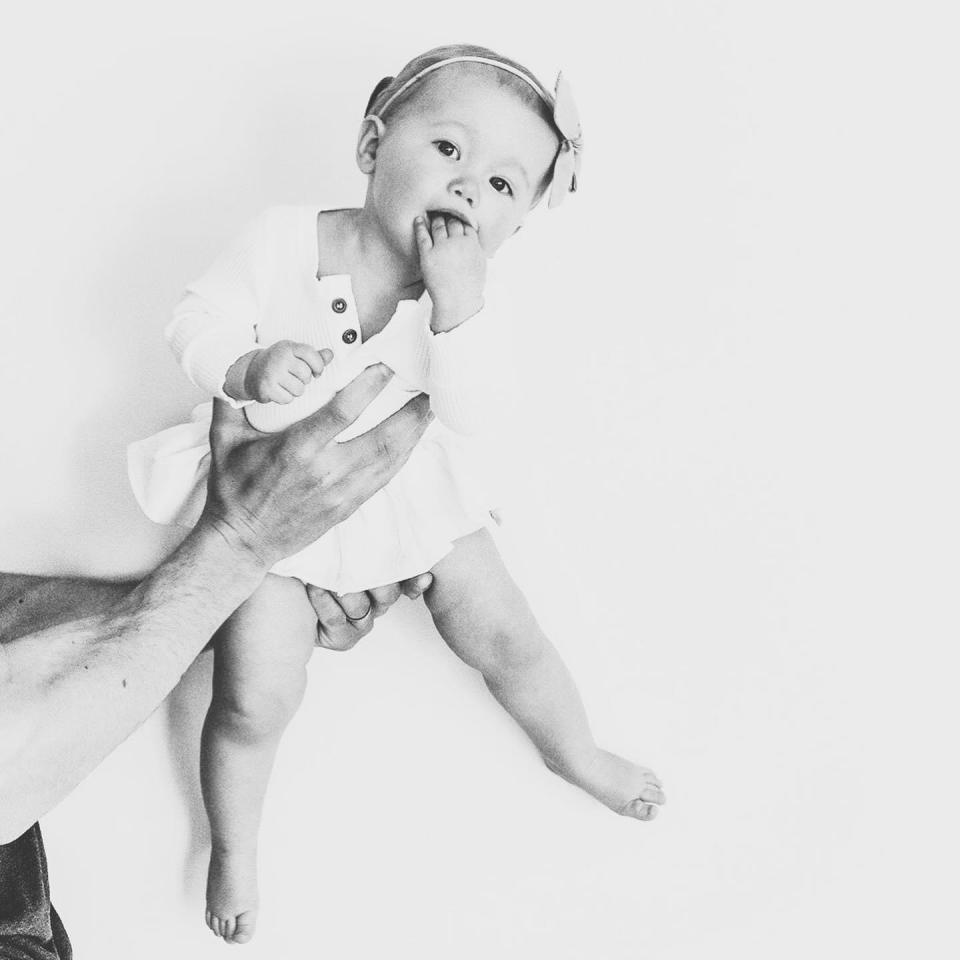Video captures the moment a deaf baby hears her mother's voice for the first time
A video has captured the moment a deaf baby heard her mother’s voice for the first time.
Liv, from Minnesota, failed two hearing tests soon after she was born on 13 June.
Read more: Deaf mother inundated with orders for mask that lets people lipread
Genetic screening later revealed she has a mutation that makes her completely deaf in one ear and only able to hear “moderately” in the other.
Liv tried hearing aids for seven months, before the family’s health insurance approved her to have a cochlear implant fitted.
Just a few months on, Liv “loves music” and is a “totally normal baby”.

Liv was born with a connexin 26 mutation, which is responsible for one in 10 childhood hearing loss cases in the US.
The youngster had a routine screening after she was born, which she failed twice.
Once home, her parents Marni and Derek opted for a “more in-depth hearing test”, which confirmed she was deaf.
Genetic screening later revealed Liv’s parents both carry a recessive gene for the mutation. Any child of theirs therefore has a one in four chance of being born with the condition.
With no family history of hearing loss, and a healthy two-year-old son, they initially struggled to accept Liv’s diagnosis.
“It was hard; you don’t expect something like that,” Marni, 31, told Yahoo UK.
“The last thing you want for your new baby is knowing they’ll [face] a challenge.
“We didn’t know what her options were.”
Read more: Girl’s tattoo reminds people she’s deaf
Despite their concerns, the parents were “super optimistic” hearing aids would be effective.
Their optimism was misplaced, however, with Liv failing to react when they banged pots or their dog barked.
Seven months on, insurance was approved for Liv to have a cochlear implant.
The US Food and Drug Administration lowered the age to have an implant fitted from one year to nine months in March. The UK has no minimum age for the surgery, but the patient must weigh at least 15lb (7kg).
“The earlier you do it, the better results,” Derek, 32, told Yahoo UK.
The surgery involves a stimulator bering placed in the bone just behind the ear and an electrode inserted into the cochlea, the hearing organ.
An electrical message is sent through the electrode to the auditory nerve, which connects to the brain.
Liv was in and out of hospital the same day, with Marni describing the process as “pretty straightforward”.
Due to the coronavirus outbreak, only Liv’s mother could be with her while she had the operation.

‘She’s going to live a beautiful life’
A few months on from the procedure, Liv reacts to the doorbell, dog and loves it when her parents “click their tongue”.
“We do loud things and she can really hear it,” said Marni, a nurse.
Liv’s parents have also noticed she is smiling more, has developed new facial expressions and turns when you say her name.
The youngster will continue to meet with an audiologist until they find the hearing “level” that is right for her.
“It’s like a dimmer light; [we’re] slowly bringing it up until we reach that goal,” said Marni.
Read more: Father gets cochlear implant tattoo so deaf daughter doesn't feel ‘odd one out’
These consultations have been somewhat disrupted, however, by the coronavirus pandemic.
Marni and Derek are speaking out to bring comfort to other parents in a similar situation.
“The thing that gave me hope was seeing other children [online] on the journey ahead of her and how well they are doing,” said Marni.
“That saved me some days.
“I don’t know what’s to come of this, but I know she’ll be okay, she’s shown us that.
“She’s going to live a beautiful life.”

What is a cochlear implant?
Cochlear implants may be effective for people lacking hair cells in their cochlea, which sense vibrations and trigger an electrical message down the auditory nerve.
Hearing aids amplify sounds, which can help in mild cases.
In more severe patients, where hair cells are damaged or absent, these louder noises still cannot be picked up.
Cochlear implants bypass the hair cells and send an electrical signal directly to the auditory nerve.
The surgery is therefore only effective if the patient’s auditory nerve is intact.
Once they come round from the anaesthesia, the patient waits between three and six weeks for the swelling to go down. The external part of the implant, the processor, is then fitted.
This is “switched on”, with medics working to find the right level of hearing for the individual.
Youngsters who have the implant before four years old tend to do “very well”, while older children see less of a benefit.
The internal part of the device should last throughout the patient’s life, however, it may break down and need to be replaced.
Cochlear implants are not a guaranteed success, with some patients only getting more awareness of sound, which may aid lipreading.


